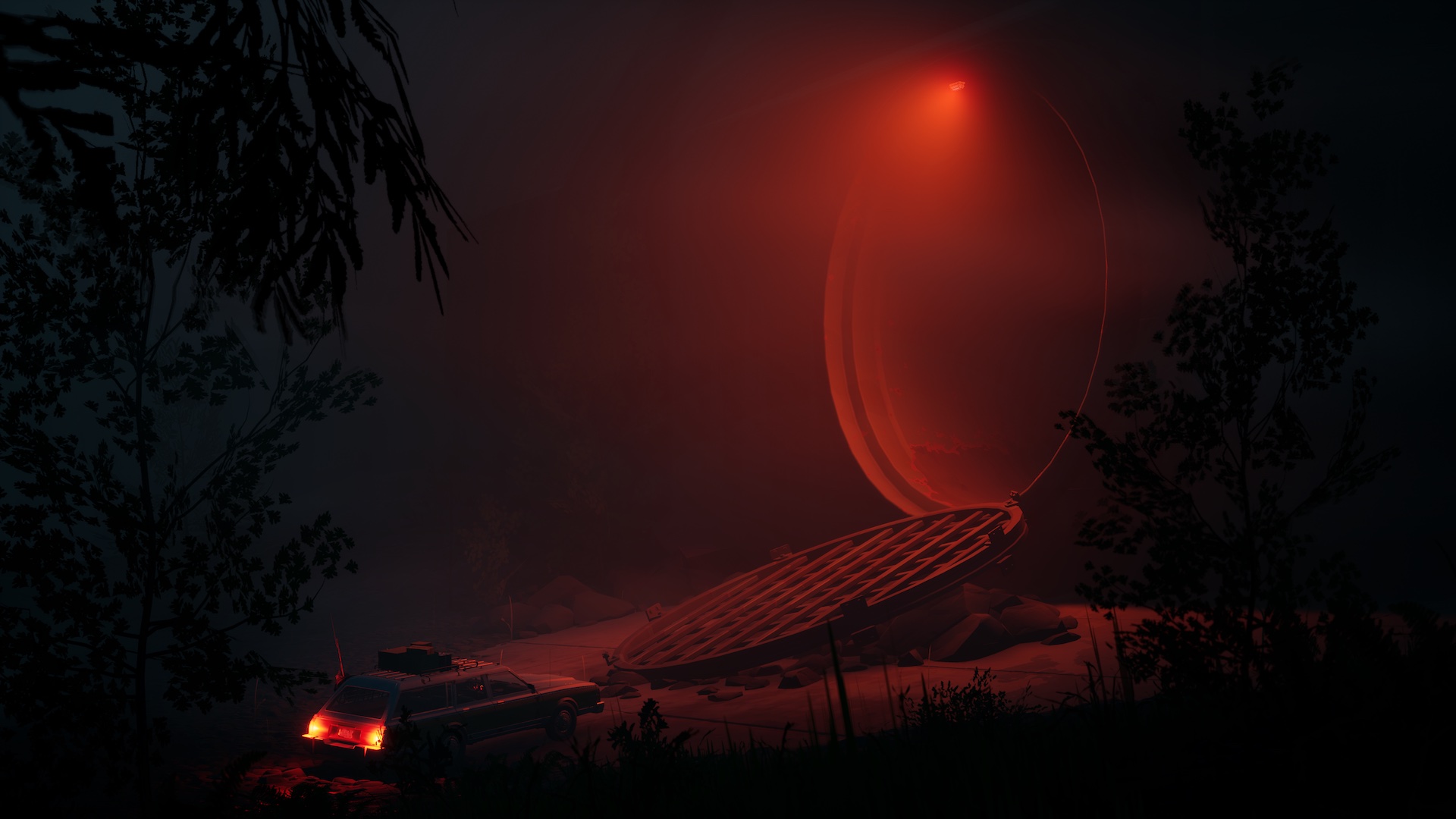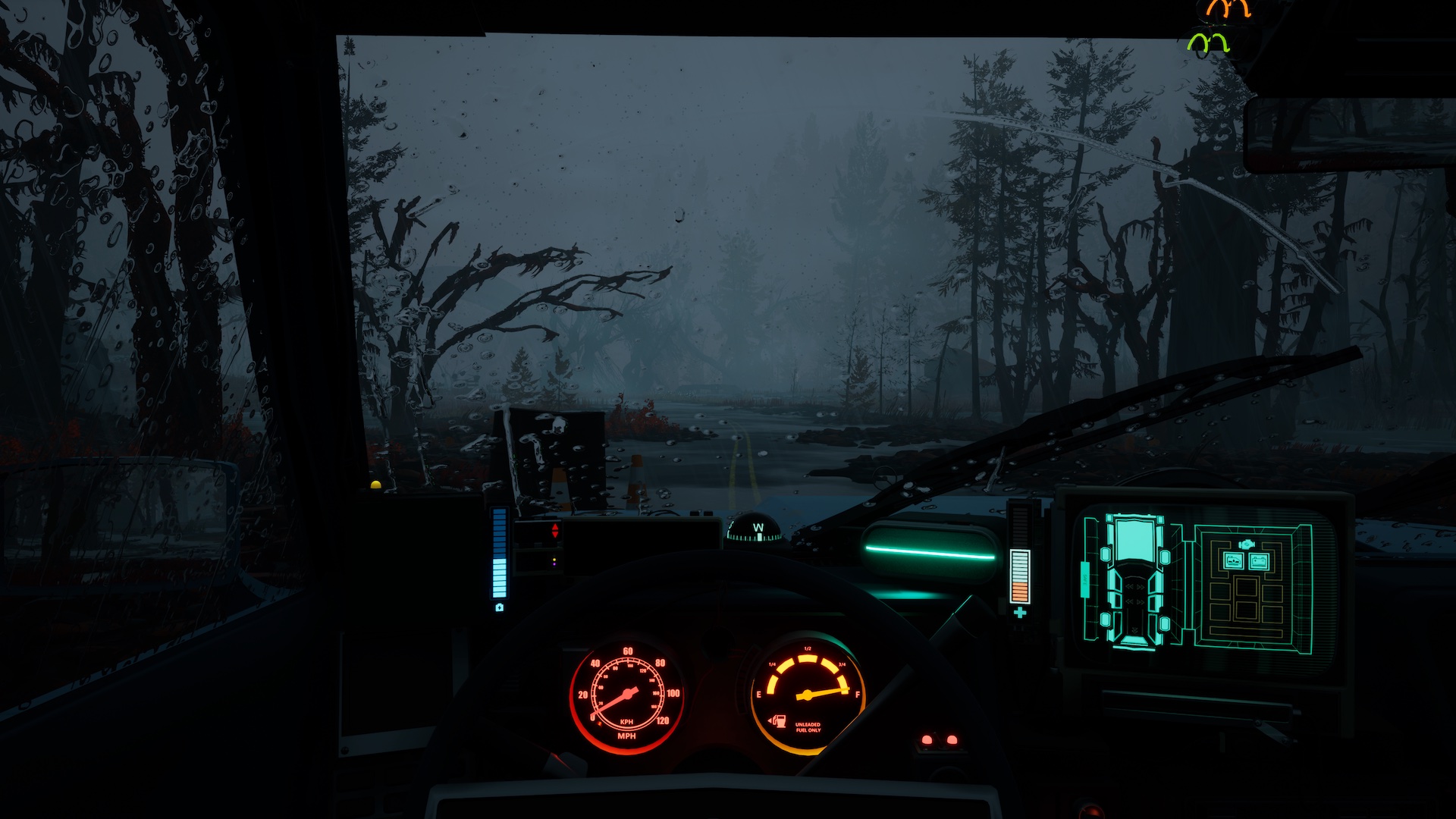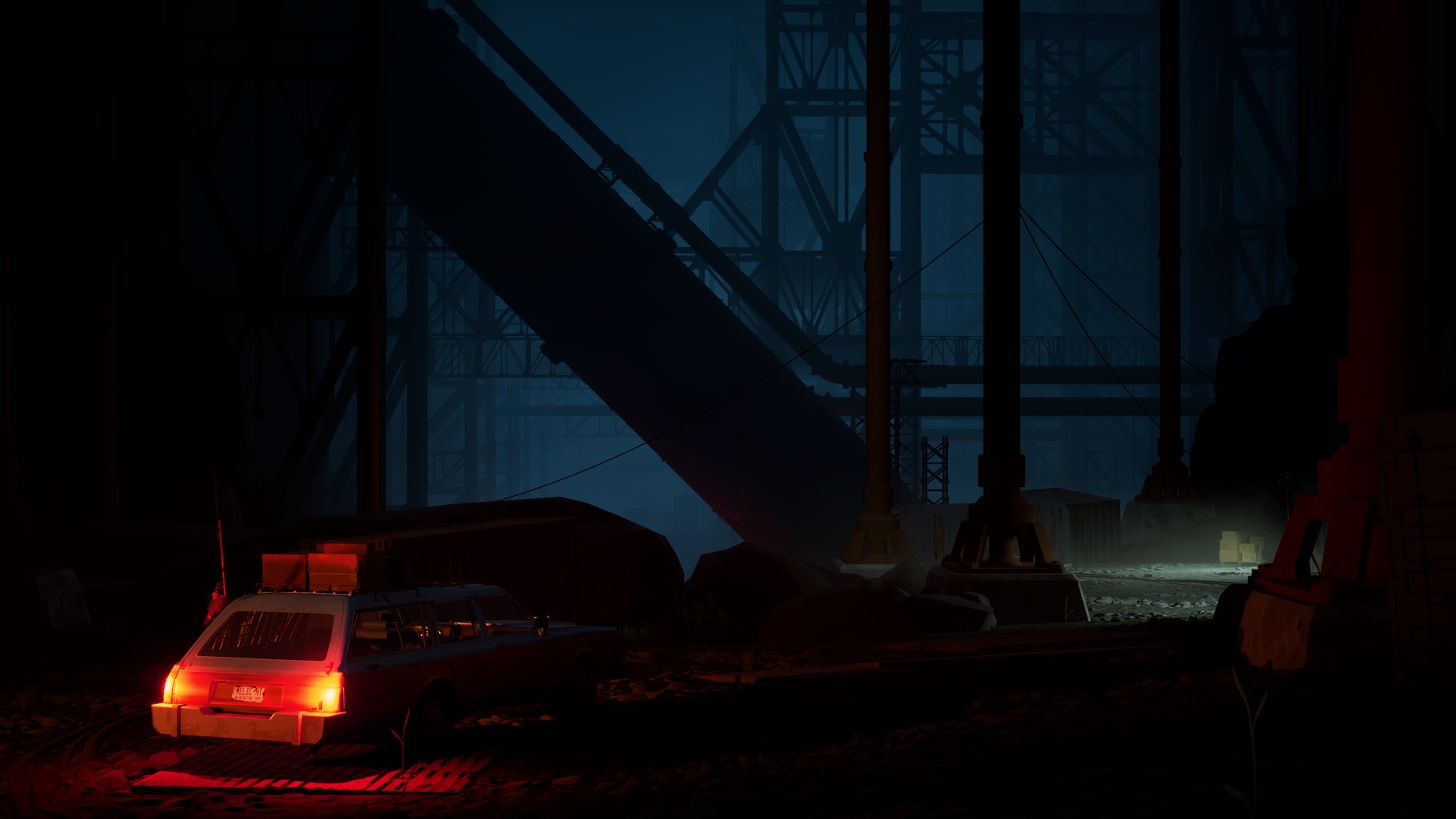
Pacific Drive is such a good idea that I can't believe it hasn't been executed sooner. It's just you and your station wagon, patrolling the wilderness of the Pacific north-west – well, the Olympic Exclusion Zone, as it's known now. The change in classification has something to do with the violent anomalies that have taken ahold of the landscape, radiation rendering it uninhabitable. That's where you and your trusted, rusting companion come into the picture.
In another life, perhaps your vehicle would have been the key which unlocks the open roads – an enabler of road trips, so long as you have enough gas in the tank to reach whatever destination you've marked on a map. In Pacific Drive, it's the only thing protecting you from certain death. You need to keep your car maintained, stocked up, and taken care of. There's this almost ritualistic cycle at play before you head back out to the Zone: check the tires, repair the cracks, recharge the battery, hit the road. All of this achieved through an intuitive, physical engineering setup back at your garage, with the physical heft of interaction helping to further immersion in the high-concept.
Drive to survive


GamesRadar+ visited Gamescom to play the most anticipated new games of 2023 and beyond. For our hands-on previews and exclusive interviews, visit the Gamescom 2023 coverage hub for all of our access and reporting.
Game director Alex Dracott likes to talk about Pacific Drive as a "run-based driving survival game." An apt description, with the cycle of play rotating between maintenance, road tripping to distant locations, and then weaving your way cautiously through a specific area of the Zone for resources. Make it back in one piece and the cycle begins anew. One thing I really appreciate during my hands-on time with Pacific Drive is how committed Ironwood Studios is to the fantasy.
Pacific Drive features a smartly implemented diegetic user interface, meaning that every key piece of information and point of interaction is physically represented in the world around you. Want to check the map while you're barreling through a lighting storm in the dark of the Olympic Exclusion Zone? Then you'll need to physically tilt your gaze away from the road with the right thumbstick and assess a map pinned across the passenger seat. Need to switch on your headlights, well there's a button for that. And if for whatever reason you need to step out of the vehicle, you'll first need to kill the engine and put the thing in park. It may sound complicated on paper, but it all makes sense while you're playing, and is an effective tool for ratcheting up tension.
This first-person driving is often tense, and delightful, and that's because Ironwood never skews into full simulation territory. Dracott tells me the reason the studio never pushed for more complicated systems – manual gears, or more in-depth maintenance – is because this would ultimately distract from the core pleasures of getting behind the wheel and hitting the road. "Pacific Drive is about the fantasy of being a mechanic, and of developing a strong relationship with your car. We wanted all of that to be pretty immediate and accessible," he says. "So we've taken some liberties to get away from intricate management of the car or turning screws individually, that sort of stuff."

Would Dracott consider more in-depth mechanics to help really dial up the survival aspects of Pacific Drive in the future? He's not ruling anything out. "Those kinds of hardcore simulation systems are in the back of my head – maybe that's the first post-release content thing we'll do. I don't know, but for the main game we wanted to remove friction where it makes sense, and put it back in where it makes sense too. Having a manual handbrake is a beautiful little story generator, but I don't know that having to shift from first to third gear would actually generate much interest in that sense."
The important thing is that Pacific Drive works. Ironwood Studios has nailed the core creative concept, and I'm delighted to report that it feels fantastic in your hands. The car handling is heavy, and sometimes unpredictable – your car may develop unique faults over time after exposure to the strange elements, and there's a system in the garage for you to manually discern what the issues are and how to resolve them. You know, unless you're happy with your car skewing to the left every time you switch the windscreen wipers on as you attempt to navigate an irradiated wasteland in the dark.
Sign up to the GamesRadar+ Newsletter
Weekly digests, tales from the communities you love, and more
Pacific Drive will launch in 2024, where it's already one of our most anticipated upcoming PS5 games and new PC games of the year.

Josh West is the Editor-in-Chief of GamesRadar+. He has over 15 years experience in online and print journalism, and holds a BA (Hons) in Journalism and Feature Writing. Prior to starting his current position, Josh has served as GR+'s Features Editor and Deputy Editor of games™ magazine, and has freelanced for numerous publications including 3D Artist, Edge magazine, iCreate, Metal Hammer, Play, Retro Gamer, and SFX. Additionally, he has appeared on the BBC and ITV to provide expert comment, written for Scholastic books, edited a book for Hachette, and worked as the Assistant Producer of the Future Games Show. In his spare time, Josh likes to play bass guitar and video games. Years ago, he was in a few movies and TV shows that you've definitely seen but will never be able to spot him in.


